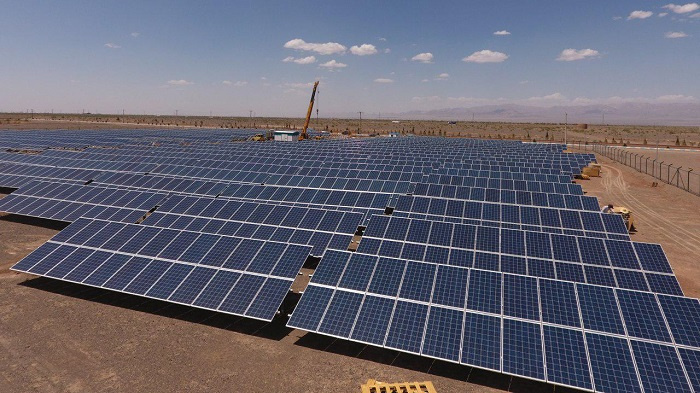Austrian Investment, Iranian Energy

(Rafsanjan solar farm. Photo Credit: KPV-Solar.com)
Reza Zandi
The foreign airline that was landing in Imam Khomeini Airport carried only a handful of foreigners. Only three or four Chinese were traveling to Tehran. Iran was under international sanctions and the cordon was becoming tighter day by day. No tourists and no investments. Despite its rich history, four-season climate, large market and strong potential for investment, Iran was not attractive for foreigners. By the early 2010s, most countries had closed their doors to the Iranian economy.
Yesterday, however, a large number of Europeans traveled to central Iran to inaugurate a € 1.2 million project in Kerman Province. One can only wish that JCPOA achievements are further elaborated for the public.
Small- and medium-sized enterprises (SMEs) comprise 40% percent of GDP and 60% of employed workforce in emerging economies; businesses that are run by the private sector and occasionally by families, and play a critical role in developing countries. Iran needs to expand these businesses to speed up its development. And the main factor that contributes to SMEs’ expansion is to reduce risks and secure investment, which, if realized, brings foreign capital, just like what happened yesterday in Rafsanjan, Kerman Province.
On Wednesday evening, in a ceremony attended by the governor of Rafsanjan, Kerman Governor office and executives from the KPV company of Austria, a 1.2 megawatt solar power plant started operation in this city of 150 thousand population. The plant was negotiated and funded with a € 1.2 million investment in six months. Fifty percent of the investment was made by the private sector and the other 50% by the Austrian KPV investment company. Yesterday, a new 60-megawatt project for another solar power plant was inaugurated by the same Austrian company.
A number of German and Austrian correspondents also traveled from Tehran to Rafsanjan yesterday, along the Austrian investors, to cover the ceremony for launch of the solar power plant. Now you can see the impact of JCPOA, even in an small scale.
Days that no foreigners came to Iran have passed. They are now here to invest, even without sovereign guarantee, and bring reporters with themselves to announce the news to the public across the world. The volume of the investment may be insignificant; but it is the spirit that counts. Reputable companies are happy to collaborate with Iran, and that is priceless.
Kerman has 330 days of sunshine. It is ‘the’ paradise for solar power plants. The province is suffering draught and its trademark pistachio gardens are dying. In such circumstances, it can easily be a generous host to solar power plants which are pretty easy to install. The government also guarantees to purchase the generated power for 20 years and is ready to pay a generous amount of money for each kilowatt. Looks like a lucrative business indeed.
Earlier this week, President Rouhani’s candidate for the Ministry of Power failed to receive a vote of confidence from the parliament due to concerns over the state of water and environment; a clear sign that environmental issues have gained public attention. This is where renewable energy, from solar panels to wind farms, can make inroads and develop. After all, renewables are a key part of the world's future energy map.
* This article was originally published in the Reformist daily Etemad. Reza Zandi is senior analyst and energy economy journalist.

